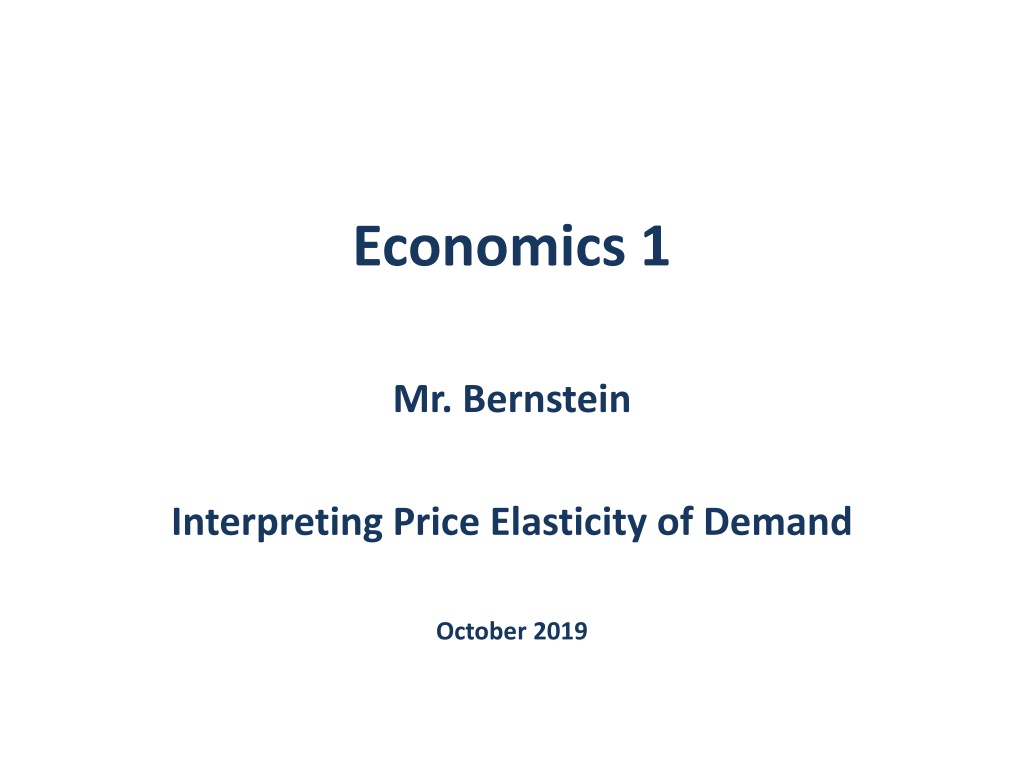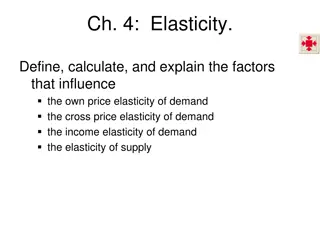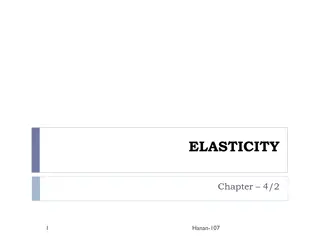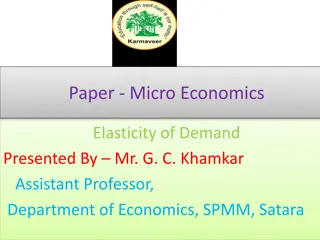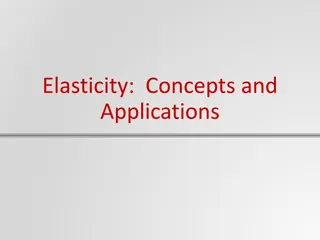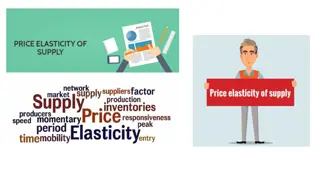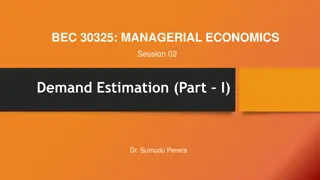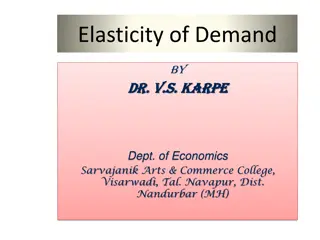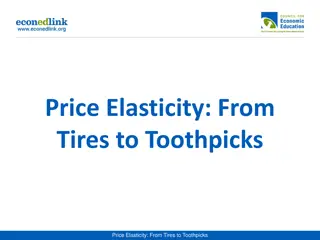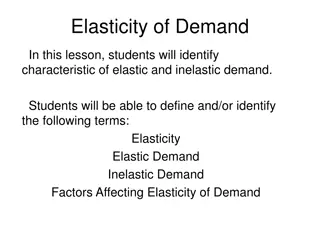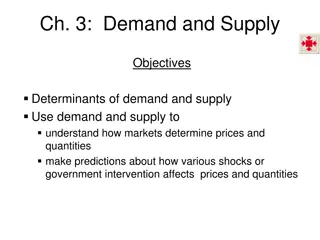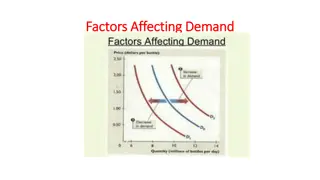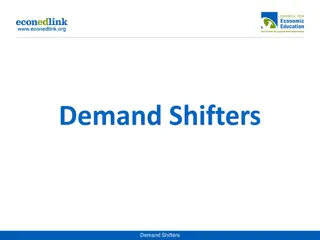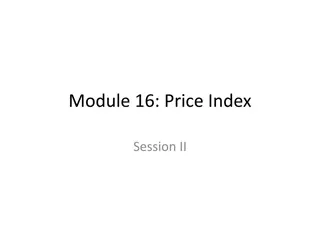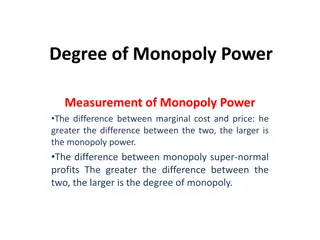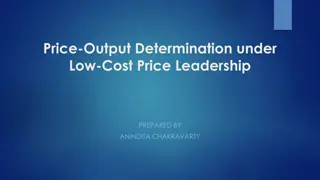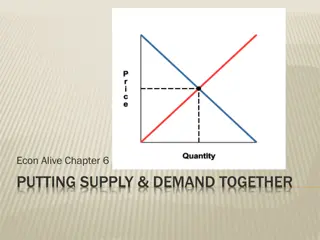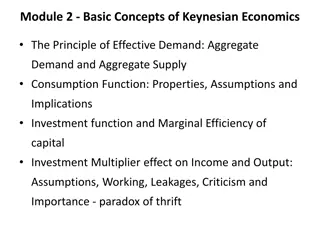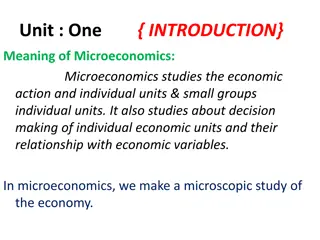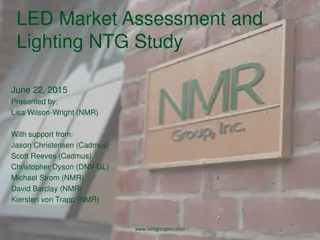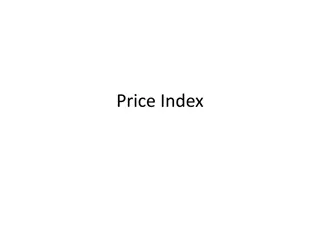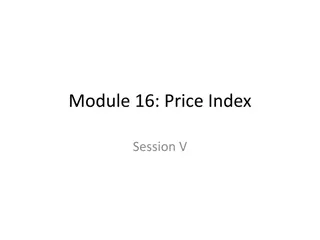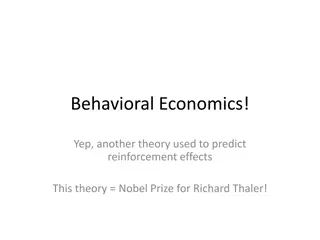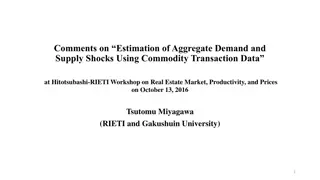Understanding Price Elasticity of Demand in Economics
Price elasticity of demand is a crucial concept in economics, as it measures the responsiveness of quantity demanded to price changes. A higher elasticity value indicates a more significant impact of price changes on demand. The concept helps businesses understand how changes in pricing affect their sales and revenue, with perfectly inelastic demand having no impact on quantity demanded, while perfectly elastic demand shows an infinite impact on quantity demanded. Factors influencing elasticity include the number of substitutes, whether a good is a luxury or necessity, the share of income spent, and the time involved. Determining elasticity can be done through the Total Revenue Test and the Elasticity Coefficient Test.
Download Presentation

Please find below an Image/Link to download the presentation.
The content on the website is provided AS IS for your information and personal use only. It may not be sold, licensed, or shared on other websites without obtaining consent from the author. Download presentation by click this link. If you encounter any issues during the download, it is possible that the publisher has removed the file from their server.
E N D
Presentation Transcript
Economics 1 Mr. Bernstein Interpreting Price Elasticity of Demand October 2019
Economics 1 Mr. Bernstein What Does the Value of Elasticity Tell Us? Example: Ed= % Qd/% P = 10; P rises 1% Algebra: % Qd/1% = 10, so % Qd= 10% fall in Qd For a business, this is a dramatic fall in sales due to a small price increase Elasticity describes the steepness of the demand curve Elasticity of zero = perfectly inelastic changes in prices have no impact on quantity demanded (vertical) Perfectly elastic changes in prices have infinitely large impact on quantity demanded (horizontal curve) 2
Economics 1 Mr. Bernstein Examples of Perfectly Inelastic and Elastic Curves xxxx 3
Economics 1 Mr. Bernstein What Does the Value of Elasticity Tell Us? In general terms: Inelastic means a steep or steeper curve Elastic means a flat or flatter curve 4
Economics 1 Mr. Bernstein Elasticity and Total Revenue TR = P x Q Price effect: Raise P, R tends to rise Quantity effect: Raise P, Qd falls, so R tends to fall 5
Economics 1 Mr. Bernstein Elasticity along the Demand Curve TR begins to fall as prices rise and Elasticity grows 6
Economics 1 Mr. Bernstein Determinants of Elasticity # of Substitutes More substitutes, more elasticity Luxury or Necessity More necessary, less elasticity Example: Insulin vs. Bicycles Share of Income Spent Larger percent of budget, more elasticity AKA Expensive vs. Inexpensive Time More time involved, more elasticity 7
Economics 1 Mr. Bernstein Determinants of Elasticity, cont. Total Revenue (TR) Test If TR rises as P rises, demand is inelastic If TR falls as P falls, demand is inelastic If TR falls as P rises, demand is elastic If TR rises as P falls, demand is elastic Elasticity Coefficient Test If Elasticity >1, it is elastic If Elasticity <1, it is inelastic 8
